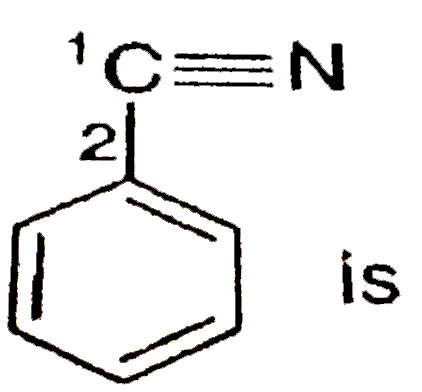the bond between P atom and Cl atom are in PCl5 are likely to be
Ionic with no covalent character
Covalent with no ionic character
Covalent with some ionic character
Ionic with some metallic character
The correct Answer is:C
To determine the nature of the bonds between phosphorus (P) and chlorine (Cl) atoms in phosphorus pentachloride (PCl5), we can follow these steps:
Step 1: Identify the Compound
The compound in question is phosphorus pentachloride (PCl5). The prefix "penta-" indicates that there are five chlorine atoms bonded to one phosphorus atom.
Hint: Remember that the prefix in chemical nomenclature indicates the number of atoms present in the compound.
Step 2: Understand the Structure of PCl5
Phosphorus pentachloride has a trigonal bipyramidal structure. In this structure, three chlorine atoms are in a plane (equatorial position), and two chlorine atoms are above and below this plane (axial position).
Hint: Visualizing the molecular geometry can help you understand how the atoms are arranged and how they bond.
Step 3: Determine the Type of Bonding
The bond between phosphorus and chlorine in PCl5 is formed by the sharing of electrons. This type of bond is known as a covalent bond. Since both phosphorus and chlorine are nonmetals, they tend to form covalent bonds by sharing their valence electrons.
Hint: Recall that covalent bonds are formed between nonmetals through the sharing of electrons.
Step 4: Evaluate the Covalent Character
In PCl5, all five bonds between phosphorus and chlorine are covalent in nature. There is no ionic character in these bonds because both elements are nonmetals and there is no significant difference in electronegativity that would lead to ionic bonding.
Hint: Consider the electronegativity values of the elements involved to assess whether the bond is covalent or ionic.
Conclusion
The bonds between the phosphorus atom and the chlorine atoms in PCl5 are likely to be covalent bonds.
Final Answer: The bonds in PCl5 are covalent.
The compound in question is phosphorus pentachloride (PCl5). The prefix "penta-" indicates that there are five chlorine atoms bonded to one phosphorus atom.
Phosphorus pentachloride has a trigonal bipyramidal structure. In this structure, three chlorine atoms are in a plane (equatorial position), and two chlorine atoms are above and below this plane (axial position).
The bond between phosphorus and chlorine in PCl5 is formed by the sharing of electrons. This type of bond is known as a covalent bond. Since both phosphorus and chlorine are nonmetals, they tend to form covalent bonds by sharing their valence electrons.
In PCl5, all five bonds between phosphorus and chlorine are covalent in nature. There is no ionic character in these bonds because both elements are nonmetals and there is no significant difference in electronegativity that would lead to ionic bonding.
The bonds between the phosphorus atom and the chlorine atoms in PCl5 are likely to be covalent bonds.
Topper's Solved these Questions
Similar Questions
Knowledge Check
- Question 1 - Select One
The bonds between P atoms and Cl atoms in PCl5 are likely to be
AIonic with no covalent characterBCovalent with no ionic characterCCovalent with some ionic characterDIonic with some metallic character. - Question 2 - Select One
Calculate the wavelength of light required to break the bond between two Cl atoms in Cl2 molecules ((BE)Cl−Cl=243kJmol−1)
A8180 ÅB9860ÅC4930ÅD500nm - Question 3 - Select One
The number of σ-bonds between P and O atom in H4P2O7 and number of bonds between P and P atom in white phosphorus, respectively are
A6 and 4B8 and 6C8 and 7D7 and 4
Assertion : Multiple bond between two bonded atoms can have more than three bonds.
Reason : Multiple bond between two bonded atoms can not have more than two π-bonds.View SolutionAssertion : Multiple bond between two bonded atoms can have more than three bonds.
Reason : Multiple bond between two bonded atoms can not have more than two π-bonds.View SolutionRotation around the bond (between the underlined atoms) is restricted in :
View SolutionIf the electron pair forming a bond between two atoms and B is not in the center then the bond is ?
View SolutionThe maximum number of atoms in a plane in PCl5 is
View Solution


